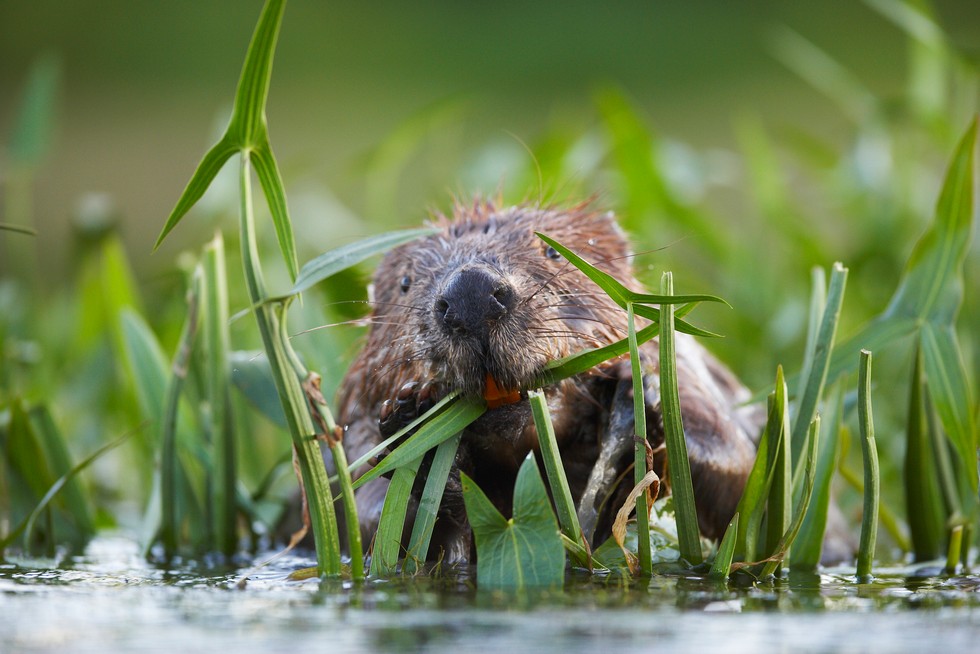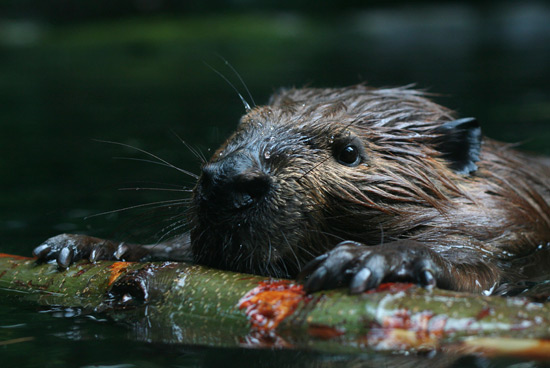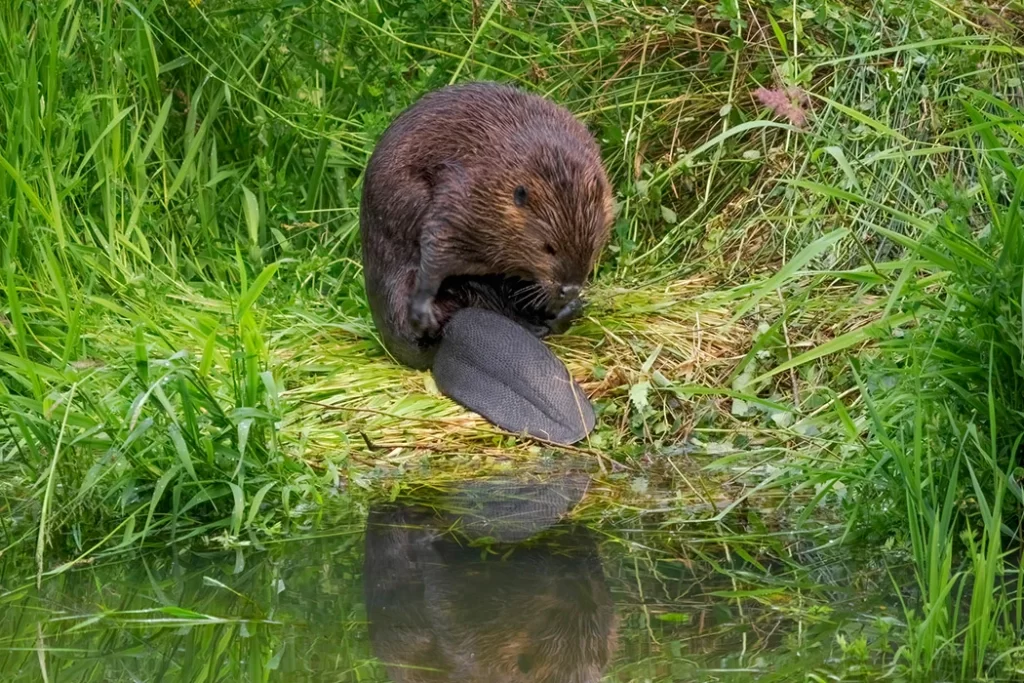The social behavior of beavers is fascinating and complex, as these large semi-aquatic rodents are known for their ability to construct elaborate dams and lodges. In this detailed description, we will explore various aspects of beaver social behavior, including their family structure, communication methods, cooperative activities, and territoriality.

Family Structure: Beavers are highly social animals that live in family groups known as colonies. A typical beaver colony consists of a monogamous pair, called the breeding pair or the alpha pair, and their offspring from previous years. The alpha pair is typically the oldest and most experienced beavers within the colony.
The breeding pair is responsible for maintaining the colony, reproducing, and defending the territory. They are also the main architects of the dams and lodges. The offspring that remain in the colony after reaching sexual maturity usually help their parents in various tasks, such as gathering food, maintaining the lodge, and caring for younger siblings.
Communication Methods: Beavers communicate with each other using a variety of vocalizations, body postures, and scent markings. Vocalizations include warning calls, whines, growls, and tail-slapping on the water’s surface, which serves as an alarm signal to alert other colony members of potential danger.
Body postures are important in beaver communication. For instance, when a beaver raises its tail vertically, it signifies aggression or a warning to other beavers. Conversely, when a beaver swims with a relaxed posture, it indicates a calm and non-threatening state.
Scent marking is another crucial communication method for beavers. They possess scent glands near the base of their tails, which they use to secrete a musky substance called castoreum. Beavers use castoreum to mark their territory, signal reproductive status, and communicate with other colony members. They rub their bodies against prominent objects and apply castoreum to communicate information about their presence and social status.

Cooperative Activities: One of the most remarkable aspects of beaver social behavior is their cooperative activities, particularly in dam and lodge construction. Dams are vital structures built across rivers and streams to create ponds, providing beavers with a suitable habitat and protection from predators.
The construction of dams involves felling trees using their powerful teeth, dragging branches, and piling up mud, stones, and vegetation. While the alpha pair takes the lead in dam construction, offspring and other colony members contribute to the construction process.
Lodges are another significant feature of beaver social behavior. These dome-shaped structures are built in the water using sticks, branches, and mud. Lodges serve as beaver homes, providing protection from predators and cold weather. They have underwater entrances, which allow beavers to access the lodge safely.
Territoriality: Beavers are highly territorial animals and actively defend their territories against intruders. Territories are established around a central pond created by the dam and can vary in size depending on resource availability.
Territorial defense involves aggressive behaviors, such as tail-slapping, vocalizations, and physical confrontations, to deter intruders. Beavers mark their territories with scent markings, specifically castoreum, to communicate territorial ownership and discourage trespassing.
In cases where two beaver families’ territories overlap, conflicts can arise. These conflicts may result in fights between males or disputes over access to resources. In some instances, beavers may engage in scent marking battles, where they try to cover each other’s scent markings with their own to assert dominance.

Social Hierarchy: Within the beaver colony, a social hierarchy exists, with the alpha pair holding the highest rank. The alpha pair establishes dominance over other colony members and takes the lead in decision-making, including dam construction and territory defense.
The social hierarchy is maintained through various behaviors, such as aggressive displays, vocalizations, and scent marking. Subordinate individuals within the colony typically show deference to the alpha pair and follow their lead in cooperative activities.
Dispersal and Formation of New Colonies: As beavers reach sexual maturity, they disperse from their natal colony to find mates and establish new territories. Typically, young males disperse farther than females to avoid inbreeding.
When a young beaver finds a suitable habitat, it will construct its own dam and lodge, and eventually, attract a mate. This process contributes to the formation of new beaver colonies and helps maintain genetic diversity within the population.
In conclusion, the social behavior of beavers is characterized by their family structure, communication methods, cooperative activities, territoriality, and social hierarchy. Their ability to construct intricate dams and lodges and work together as a cohesive unit is truly remarkable. By understanding these aspects of beaver social behavior, we gain a deeper appreciation for the complex and fascinating lives of these remarkable animals.